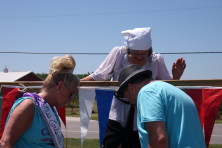Coveting Your Neighbor’s Car, or Desperately Seeking the Joneses
- Share
- Tweet
- Pin
- Share
In a recent conversation with an acquaintance, the phrase “keeping up with the Joneses” arose and, as is so often the case in my conversations, I was quickly asked whether I knew the origin of this phrase. As it turns out, I did know how the phrase was popularized but I promised to do some further research. So let’s begin with what I did know.
In simplest terms, “keeping up with the Joneses” means comparing one’s own material worth to that of one’s neighbors as a means of determining one’s own worth. The emphasis is, of course, the accumulation of material goods and therefore failing to keep up with the accumulation of goods by one’s neighbor reflects personal inferiority.
Back in 1913 a comic strip by Arthur R. “Pop” Momand debuted called “Keeping Up With the Joneses.” The Joneses of the strip’s title never actually appeared in the comic, though the main characters often referred to them. The comic was distributed by Associated Newspapers and ran in as many as 150 newspapers for 26 years.
Indeed “Keeping Up With the Joneses” was so popular that it was adapted into books, films and musical comedies. A footnote to keep in mind as you continue to read is though Momand was born in San Diego, he graduated from Trinity College in New York.
Now we move on to what I didn’t know before I began my research.
Another theory of the phrase’s origin involves the family of noted American author, Edith Wharton. In this theory, the “Joneses” of the phrase refers to the family of Wharton’s father, George Frederic Jones, who were fabulously wealthy through marriages to the daughters of John Mason, the founder of Chemical Bank in New York.
In the mid-1900s, rich New Yorkers, including the Jones family, began building country homes in the Hudson Valley on land owned by the Livingstons, who the Joneses were – of course – related to. In 1853, Elizabeth Jones built “Wyndcliffe,” a 24-room gothic villa, which led to a flurry of construction in the Valley, with each new country estate being just a little larger and just a little more opulent, including a home constructed by William B. Astor (married, of course, to a Jones cousin). Thus, this Hudson Valley construction boom/competition is theorized to be the origin of “keeping up with the Joneses.”
But we don’t stop there with possible origins. For the next theory we remain with Jones family mentioned above and focus on their over-the-top, old money lifestyle.
As you may have surmised, at this point, the Joneses were numerous, wealthy, and had married into numerous other wealthy New York families: in particular their familial relationship to Mrs. William Blackhouse Astor, Jr. (Caroline Schermerhorn Astor), who founded the Patriarch Balls.
The Patriarch Ball was the brainchild of Mrs. Astor and Ward McAllister, who formed the Society of Patriarchs, a 25-member committee “representing men of worth, respectability, and responsibility.” Each member of the Society was tasked with distributing invitations to select individuals with a goal of gathering both old and new money at the “most brilliant of balls.” The first Patriarch Ball was held on Feb. 29, 1892, and gave rise to the “Four Hundred,” which was the list of society’s elite that received invitations to the Ball.
These balls were later replaced by the Assembly Balls, which were held three times each winter in December, January and February with the first held on Dec. 10, 1892. Similar to the Patriarch Balls, the Assembly Balls were headed by a committee of 50 members, this time all women, who distributed invitations as they deemed appropriate. Among the committee members for these events was Mrs. John Jacob Astor – a Jones relation, of course.
So in this scenario for the origin, “keeping up the Jones” entailed being invited to one of these exclusive balls.
So, the origin of the phrase is a little murkier than I believed at the outset. But there is one more curious aspect to this phrase that, while it almost certainly had nothing to do with its popularization, remains interesting.
In 1901, Mark Twain wrote an essay titled “Corn Pone Opinions.” Within the essay he wrote the following:
“The outside influences are always pouring in upon us, and we are always obeying their orders and accepting their verdicts. The Smiths like the new play; the Joneses go to see it, and they copy the Smith verdict.” So in Twain’s version, the Joneses are trying to “keep up with the Smiths,” which doesn’t quite have the same ring to the ear as “keeping up with the Joneses.”
Despite the 1901 authorship date of Twain’s words, which preceded the Momand’s comic strip by 12 years, “Corn Pone Opinions” did not appear in print until 1923, so despite the many wonderful words and phrases Twain has provided our language, he is not the source for popularizing the phrase.
After reviewing all of the above, you will probably reach the same conclusion I reached: the phrase “keeping up with the Joneses,” as a reference to the extended Jones family of New York society at the time, was floating around the City (possibly as a snide aside in conversation) during the late 1900s. Momand, well aware of this phrase and its meaning, adopted the phrase as both the title and theme of his comic strip in 1913. And the popularity of his comic (including the books, movies, and musical comedies) ingrained the phrase into our language.




